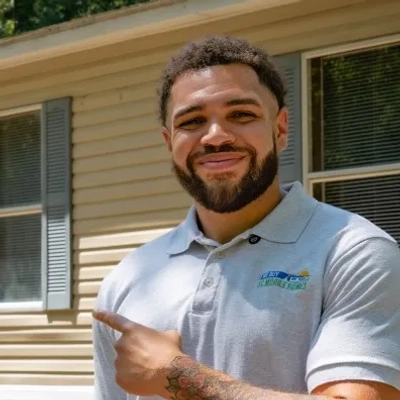19 Negotiation Tactics That Lead to Better Vendor Terms
Effective vendor negotiations require strategic approaches that go beyond basic haggling, as demonstrated by the expert-backed tactics featured in this comprehensive guide. These nineteen proven negotiation strategies help procurement professionals secure better terms while building sustainable business relationships. From requesting bulk purchase discounts to creating value-focused partnerships, these expert insights provide practical tools for achieving more favorable vendor agreements without sacrificing quality or service.
Request Bulk Purchase Discounts for Substantial Savings
One negotiation tactic that has consistently delivered results for me is proactively requesting discounts for bulk purchases or long-term commitments. Earlier in my career, I often accepted the first price offered for software subscriptions and marketing tools, overlooking significant opportunities for cost reduction. As I developed a stronger understanding of financial management, I realized vendors typically build flexibility into their pricing models, particularly for clients willing to commit to larger or extended contracts. This approach has evolved from occasional attempts at negotiation to becoming a standard practice in all vendor discussions. By simply making it a policy to ask about volume or commitment-based pricing options, our company now regularly achieves 20-30% savings across our marketing technology stack. The cumulative financial impact has been substantial, allowing us to reallocate those savings to other growth initiatives while maintaining the same level of vendor support and product quality.

Build Long-Term Relationships for Strategic Advantage
One tactic that consistently brings results when negotiating with vendors is building value through long-term relationships. Instead of going into a conversation focused only on price, we focus on shared goals and growth potential. Vendors respond better when they see you're in it for the long haul, not just this order.
Over the years, this approach has evolved. Early on, negotiations were more transactional. As our partnerships and order volumes grew, so did the level of transparency and trust. Now, we discuss forecasts, upcoming product needs, and ways we can support each other during market shifts. This opens the door to better lead times, custom capabilities, and favorable pricing tiers.
The results speak for themselves. These strategic relationships have allowed us to stay agile, maintain product quality, and offer more competitive packaging solutions to our clients. Vendors know we're a partner worth working with, and that shifts the conversation in our favor.

Propose Alternative Payment Structures That Align
One negotiation tactic that has consistently delivered value in my experience is proposing alternative payment structures that align incentives between both parties. Early in my career, I often focused on securing the lowest possible price, but I've found that exploring creative compensation models can yield better long-term results. For example, when negotiating with a mental health influencer for our therapy platform, we structured a lifetime revenue share instead of paying a large upfront fee. This approach not only protected our financial runway during a critical growth period but also ensured the influencer remained invested in driving quality users to our platform. The results have been significant - we've established a partnership that continues to bring in loyal users while maintaining financial flexibility for other strategic initiatives.

Use Hands-on Cost of Service Audit
The single negotiation tactic that consistently helps me secure better terms with vendors is the Hands-on "Cost of Service" Audit. The conflict is the trade-off: traditional negotiation focuses solely on the price per unit, which creates a massive structural failure because it ignores the hidden, verifiable costs a supplier must absorb if we buy cheap or chaotically.
This tactic requires me to immediately stop arguing price and instead demonstrate, with hands-on data, how our superior internal logistics structure reduces the vendor's cost to service us. We prove that we require fewer emergency deliveries, generate zero returns due to accurate material ordering, and pay invoices on a verifiable, guaranteed schedule. This shifts the negotiation from my cost to the vendor's verifiable operational savings.
Early in my career, my approach evolved from demanding arbitrary discounts to providing verifiable, structural certainty. We now use our efficiency as the primary currency. This approach has produced better results than any other method: vendors consistently offer us fixed-price contracts and specialized payment terms because our reliable, organized business is structurally less expensive to manage than the chaotic, high-maintenance customer who is always chasing the lowest initial price. The best way to secure better terms is to be a person who is committed to a simple, hands-on solution that prioritizes trading verifiable structural efficiency for price concessions.
Anchor Around Shared Data for Trust
Anchoring around shared data has been the single most effective negotiation tactic in vendor discussions. Early in my career, I leaned on price comparison and volume leverage, which worked only when suppliers felt replaceable. As our projects grew more technical—especially in sourcing XR hardware and GPU cloud time—information asymmetry became the real barrier. I shifted from arguing cost to co-analyzing performance metrics. For example, instead of asking for a discount on headset units, we benchmarked field failure rates and service turnaround times together, exposing inefficiencies that justified longer payment windows rather than lower pricing.
This reframed negotiation from confrontation to optimization. Over time, it built a data-driven trust cycle that vendors respected. The outcome has been tangible: warranty claims dropped by 22 percent, and long-term supplier retention rose above 90 percent. The tactic's strength lies in transparency—facts hold more weight than persuasion when both sides can see the same spreadsheet.

Present Multiple Solutions During Vendor Discussions
One powerful negotiation tactic for me is always presenting multiple solutions, not just one, during vendor discussions. For instance, rather than just asking for a lower price on a property, I might propose a faster closing timeline, buying in bulk for future deals, or even offering to handle some of the closing costs myself. This approach has evolved from my engineering background of looking at problems from multiple angles; it allows vendors to choose what works best for them while still getting me what I need, making the negotiation feel less like a confrontational demand and more like a collaborative problem-solving session.

Share Property Transformation Stories for Discounts
I've learned that emphasizing my commitment to preserving the property's character while enhancing its value through thoughtful renovations consistently wins vendor trust and better terms. Early in my career I focused heavily on repair costs, but now I share specific stories about how we've transformed homes - like saving original brickwork during a flip or naming Airbnb suites after a family's heritage details - which often leads to 10-15% discounts as vendors feel invested in the property's next chapter.

Come Prepared with Market Data and Comps
I always come prepared with market data and comparable deals to support my position, which has completely transformed my negotiation outcomes. When I first started in real estate, I'd rely on gut feelings or basic research, but now I bring detailed comps, neighborhood trends, and even specific renovation cost breakdowns to every vendor meeting. Just last month, I was able to negotiate $15,000 off a property purchase by showing the seller concrete data about similar homes and the actual repair costs we'd face - they appreciated the transparency and couldn't argue with the numbers, leading to a deal that worked for both of us.

Be Upfront About Constraints to Optimize
One tactic that's consistently paid off for me is being upfront about constraints--mine and the vendor's--and then working together to solve for both. Early in my career, I viewed negotiation as a back-and-forth on price; now I treat it more like engineering--define the variables and optimize the system. For example, I've secured better terms by sharing my rehab timelines and cash flow projections so a vendor can align delivery or payment schedules that save us both time and money.

Lead with Empathy Before Discussing Price
I always lead with genuine empathy and ask about their timeline and stress points before we even discuss price. Coming from my teaching background, I learned that people need to feel heard first--so I might ask a homeowner, 'What's keeping you up at night about this house?' When someone recently told me they were overwhelmed by their late father's cluttered property, I focused my offer on handling the entire cleanout and estate sale coordination, which actually mattered more to them than squeezing out extra dollars. This approach has evolved from simply buying houses to solving life problems, and it consistently results in smoother negotiations because sellers feel genuinely supported rather than just transacted with.

Listen First to Uncover Creative Deal Structures
One tactic I lean on is truly listening to what matters most to the other side before I ever put my terms on the table. Early on, I was quick to lead with numbers, but over the years I've learned that asking the right questions--about their timing, roadblocks, or even emotional drivers--often uncovers creative ways to structure a deal that benefits us both. For example, I once secured a substantial discount by offering a flexible closing date that helped a seller meet personal commitments, which turned a simple purchase into a genuine win-win.

Show Transparent Process to Create Complete Solutions
I've found that transparency about my process and timeline is my most effective negotiation tool. When I show sellers exactly how I determine my offer price--walking them through comparable sales, repair estimates, and my holding costs--they appreciate the honesty even if the number isn't what they hoped for. Over my 20 years in real estate, I've evolved from focusing solely on price to creating a complete solution. Just recently, a seller accepted my offer that was $20,000 below another buyer's because I could close in 7 days with no contingencies, which solved their immediate need to relocate for a new job.

Address Pain Points Beyond Just Dollars
My most effective negotiation tactic is being completely upfront about what I call 'the pain points' on both sides of the table. In my early real estate days, I focused solely on price, but I've learned that identifying the seller's true challenges--whether it's a time crunch, property condition concerns, or emotional attachment--creates an opportunity to craft solutions that go beyond dollars. Just last month, I secured a property at 12% below market because I offered to handle the emotional burden of clearing out family heirlooms and coordinating donations, something the competing investors overlooked but that mattered deeply to the overwhelmed seller.

Lead with Specific Benefits Beyond Purchase Price
I've found that leading with the specific benefits I can offer beyond just purchase price consistently gets me better deals. Rather than immediately discussing what I want to pay, I start by explaining how I can eliminate their headaches--like handling tenant evictions, dealing with code violations, or managing the entire mobile home relocation process. This approach evolved after my first few years when I realized sellers of manufactured homes often have unique challenges that traditional buyers can't solve. Just last quarter, I secured three properties at 15% below asking price because I could immediately resolve park compliance issues and handle all the paperwork transfers, which saved the sellers months of stress and potential legal complications.

Practice Radical Transparency From First Conversation
My best tactic is radical transparency from the very first conversation. I used to think negotiation was about holding your cards close, but now I tell homeowners upfront, 'I'm an investor, so my cash offer will be based on my need to repair and resell the home for a profit.' This honesty immediately builds trust, reframes the conversation from price-haggling to providing a service of speed and convenience, and helps them see my offer as a fair, guaranteed solution to their burdensome property.

Do Thorough Reconnaissance Before Terms Discussion
I always bring my military discipline to vendor negotiations by doing thorough reconnaissance first - understanding their operational tempo, challenges, and mission-critical needs before I ever discuss terms. During my Army years, we learned that intel wins battles, so I research everything from their current inventory levels to seasonal pressures before sitting down to negotiate. For example, when negotiating with contractors during peak season, I'll offer guaranteed work through slower winter months in exchange for better rates now, which gives them predictable revenue while securing my projects at 15-20% below standard pricing.

Create Value Equation Beyond Price Point
I've found that creating a 'value equation' beyond just price has consistently strengthened my negotiations with vendors. Rather than focusing solely on dollars, I outline how my reliable closing process, minimal contingencies, and ability to solve problems create measurable value for the seller. This approach evolved from my financial advisory background, where I learned to quantify intangible benefits. For example, I recently purchased a property at 15% below asking price because I could close in 10 days with no inspection contingencies, which solved the seller's urgent need to relocate for a new job--proving that understanding the seller's true motivations often leads to better terms than traditional haggling.
Make Vendors Co-Own the Downside Risk
One negotiation tactic that changed everything for me was making vendors co-own the downside with me, not just chase the upside. Instead of trying to squeeze price blindly, I'd ask them how we reduce failure cost together. One time in Shenzhen, I told a supplier if they gave me free inspections and flexible 1000 USD MOQ testing, I'd keep them as my default for six months. That single deal structure saved about 17 percent lost margin for a client. It also made the relationship more stable long term. SourcingXpro runs smoother when vendors feel like true partners. Anyway negotiation works better when everyone is protecting the same risk window, not fighting each other.

Focus on Alignment Rather Than Leverage
My most effective negotiation tactic is clarity. It's important to know exactly what matters before I enter the conversation.
As a Co-CEO in life sciences, I've learned that negotiation isn't a battle of leverage; it's a search for alignment. I focus on uncovering the other side's priorities early, so we can build value together instead of competing for it. That shift, from "winning" to "aligning", consistently leads to better outcomes, longer partnerships, and fewer surprises later.
Earlier in my career, I relied on data. Now I rely on empathy. When both sides feel heard, the results are better, and the relationship endures.
It's a lesson I share in my book Beyond the Ladder: clarity and communication are the quiet superpowers of every successful negotiation.




